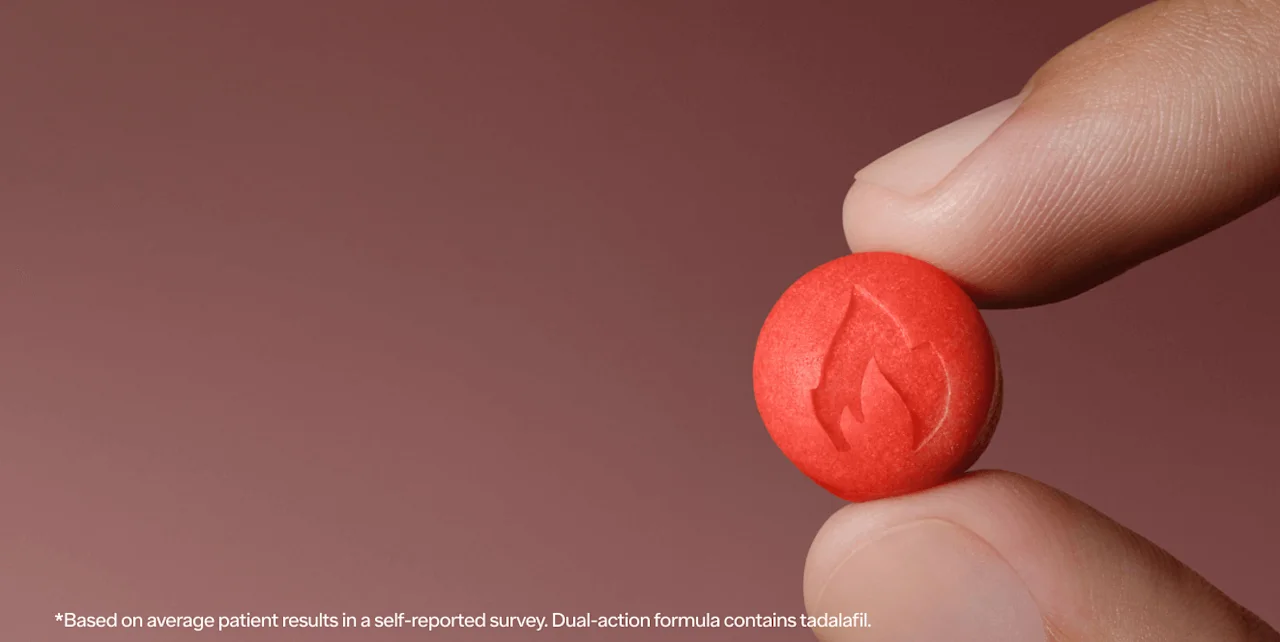Key takeaways
Jelqing is a supposed penis enlargement technique that involves stretching and pulling the penis with your hand or a device.
Fans claim that the repeated massage creates micro-tears in the penile tissues that thicken and expand when they heal, resulting in a slightly longer penis.
The technique involves making an “okay” grip around a semi-erect penis and pulling from base to tip for 5–20 minutes.
There is limited research on the topic and barely any evidence that jelqing actually works; it can also cause short-term and long-term side effects.
Here's what we'll cover
Here's what we'll cover
Here's what we'll cover
Key takeaways
Jelqing is a supposed penis enlargement technique that involves stretching and pulling the penis with your hand or a device.
Fans claim that the repeated massage creates micro-tears in the penile tissues that thicken and expand when they heal, resulting in a slightly longer penis.
The technique involves making an “okay” grip around a semi-erect penis and pulling from base to tip for 5–20 minutes.
There is limited research on the topic and barely any evidence that jelqing actually works; it can also cause short-term and long-term side effects.
Jelqing is an alleged penis enlargement technique. It involves stretching and pulling the penis with your hand or special device to create micro-tears in the tissues of the penis. As those heal, these areas supposedly thicken and expand, thus increasing the size of your penis. But does jelqing actually work? And how do you jelq, anyway?
There’s no solid, high-quality evidence that jelqing actually increases the size of your penis. Not to mention, doing it too hard and too often can cause some unpleasant side effects down there. But we get it: Wanting a larger penis is a tale as old as time. So, if you have decided to give jelqing a go, it’s important you do so safely and accurately.
Keep reading to learn how to jelq (we repeat: safely!), what science says about this technique, and alternatives to consider instead.
How do you jelq? 6 steps
Because there’s limited research on jelqing, there are no official, science-backed jelqing instructions either. However, based on the techniques available online and a review article that mentions the topic, here’s an idea of how to jelq as safely as possible, though side effects can always occur:
Start with a semi-erect penis, and apply lubricant. (This should help reduce friction and prevent chafing.)
Wrap your index finger and thumb around the base of your penis until they touch, forming a circle. You should be making the “okay” hand sign around the penile shaft.
Tighten the circle slightly to create pressure on your shaft. (Be careful not to squeeze too tight — it should not be painful!)
Slowly move your hand from the base to the head of the penis, pulling with light, consistent pressure.
When you reach the tip, slide your thumb and index finger back to the base and repeat for 5–20 minutes every day.
Be sure to stop jelqing if:
You start to get aroused and fully erect
You start to feel any pain or discomfort
And remember: These jelqing steps are not backed by medical professionals. In fact, many (if not most) do not recommend the practice, says Justin Dubin, MD, a board-certified urologist and men’s health specialist.
Alternative jelqing techniques
If you’re not liking the above jelqing technique or just want to switch it up, here are some alternative tactics to consider:
Try a different grip. Instead of making a circle with your fingers, you can place your index finger on top of your shaft and your thumb below (sort of in a pinching shape). Apply light pressure as you pull down from the base to the head.
Jelq with less lube. An alternative technique involves using minimal lube for more friction and control. Use just enough to protect the skin, apply very light pressure, and move slowly from base to head. Using too much lube may reduce friction and make it harder to control pressure.
Jelqing tools
Jelqing tools or penis stretching devices (aka traction devices) can also add variation to your jelqing routine. However, you should really only use these if your healthcare provider prescribes them to you for a specific penile health–related reason, Dr. Dubin says.
It’s also important to note that research shows these devices really don’t make a significant difference when it comes to extending penile length. They can, however, help if you’re using them to treat a deformity, such as Peryronie’s disease, which can be diagnosed by a healthcare provider.
Overall, Jelqing tools can be risky and lack strong scientific evidence behind them, unless you are using them to treat a deformity such as Peyronie’s disease.
These devices can look intimidating (to say the least) and are often expensive. Examples include the “Andro-Penis” and “Golden Erect.” They are typically made of metal rods and plastic rings and worn for several hours a day. They work by applying continuous stretching force to the penis in the hopes of making the penis longer.
Does jelqing actually work?
It is unlikely that jelqing actually works, especially when it comes to delivering big results. There isn’t scientific evidence behind it. Much of the information we have is from anecdotal reports and, frankly, is not that impressive.
Jelqing is not a practice healthcare providers typically recommend, for both safety and efficacy reasons.
“If it actually worked, don't you think everyone would be walking around with the biggest penis?” Dr. Dubin says. (Hey, he has a point…)
Still, there is some research related to penis stretching techniques, and findings are mixed:
A 2009 study had 15 participants use the “Andro-Penis“ device for at least four hours a day for six months. This resulted in an average of 2.3 cm increase in flaccid penis size.
A 2011 study had 23 participants use the “Golden Erect” device for 4–6 hours a day at the start and nine hours a day towards the end of the trial. This led to about a 1.2 cm increase in penis length over the course of the three-month trial.
A 2013 review of older studies suggests that wearing penis-stretching devices for hours a day over the course of several months could result in length gains from 0.5–3 cm. However, the higher numbers were mostly reported for those with Peyronie’s disease who had also undergone surgery.
A 2016 literature review said penile traction therapy could be considered as a noninvasive treatment to increase penile length in those seeking treatment for a “short/small penis” but acknowledged existing studies were poorly designed and more information is needed.
In 2018, PhalloGauge Medical (a company that sells penis extenders) reported results from a small, informal jelqing study in which seven men performed 200 jelqing strokes per day for three months; the average increase in penile length was reported to be 0.13 inches in length and 0.3 inches in girth. Authors concluded the changes were minor and that technique was not a promising one for penis enlargement.
There are several important things to consider it comes to these studies:
They’re mostly focused on traction devices, not old-fashioned manual jelqing (i.e. using your hand).
The sample sizes of these studies were small, which limits how confident we can be in the results.
Participants often self-selected into treatment groups, and motivation or willingness to comply may have influenced outcomes.
Results depended heavily on how consistently and correctly people used the device, which is hard to measure or control.
Devices and protocols varied widely across studies, making results hard to compare or generalize.
We don’t have any long-term follow-up studies to see if the minor results even lasted.
Plus, there are no recent studies within the last few years; in other words, the findings are starting to be a bit dated.
To determine if jelqing really is effective, we would need formal randomized clinical trials (especially ones that evaluate jelqing by hand) with larger sample sizes.
Side effects and risks of jelqing
Because of the lack of research on jelqing, it’s hard to confidently comment on the safety of the practice. However, a major downside of jelqing is that it poses a risk of injury.
Just take it from Dr. Dubin, who says that the more you do it, the more likely you are to injure yourself. Although he says he’s also had patients who’ve hurt themselves after jelqing just once. (In general, he advises penis-havers against jelqing.)
Some potential side effects of jelqing include:
Bruising
Swelling
Numbness
Pain
Irritation
There are also long-term risks associated with jelqing and penis stretching exercises in general.
Jelqing can increase your risk of developing Peyronie’s disease, according to Dr. Dubin. This is a condition where scar tissue forms under the skin, causing painful erections and a curve in the penis.
As you might imagine, developing these symptoms can also really compromise your ability to have a satisfying sex life. Plus, Peyronie’s can lead to erectile dysfunction (ED).
“By jelqing, you’re not only potentially causing harm, but you’re also potentially doing the opposite of what your goal is, by creating ED or shortening of the penis,” Dr. Dubin says.
How to avoid injury while jelqing
The following tips may help reduce side effects while jelqing.
Lubricate your penis. You don’t have to use lube if that gets you too excited, but it’s smart to use something to prevent chafing and irritation. You can try Vaseline, unscented lotion, or oil.
Don’t jelq when you’re hard. Jelqing works best (if it works at all) when you can still move some blood into the penis. When you’re hard, the penis is already filled with blood. Try jelqing when you’re aroused and starting to get hard, but not all the way there just yet.
Stop if you notice any pain or discomfort. Jelqing should not be painful. If you experience any pain or irritation, stop immediately and give your penis a rest! If you notice any signs of penis injury — including bruising, red spots, or, in more severe instances, ruptured veins, or pain, numbness, or irritation that does not go away — stop jelqing and make an appointment with a healthcare provider.
Don’t overdo it. If at all, jelqing should only be done once or twice a day, for 20 minutes at most. Doing it more often than that can lead to side effects, possibly even permanent damage or ED. Be sure not to apply too much pressure or force while jelqing.
How soon can you expect to see results from jelqing?
Chances are, you probably won’t see noticeable results from jelqing. Currently, there isn’t any peer-reviewed research that backs up the claims that jelqing by hand works.
Of the studies that have found any success with penile traction therapy (using devices), the participant numbers were very small. Plus, the outcomes suggested that it takes a lot of time and effort to see minimal, if any, results from traction or stretching devices. (As mentioned above, most of the available studies didn’t look at manual jelqing.) Most studies involving devices give a time period of at least three months. In these studies, participants usually increase penis length (but not girth) by about 1–2 cm. Of course, this requires consistent use of the device for numerous hours on a daily basis.
If you’re jelqing by hand for up to the recommended 20 min max per day, you’re unlikely to see results quickly — if at all.
Alternative penis enlargement techniques
While jelqing is most likely ineffective when it comes to lengthening your penis, there may be other options. If you’re considering jelqing, Dr. Dubin suggests not doing it, and instead visiting a urologist to discuss more legitimate strategies. These include:
Surgery. In terms of permanent results, penis enlargement surgery is generally the most effective. Several penis enlargement surgeries are available that can increase length (or at least the appearance of length) and girth. Examples include snipping the penis' internal ligament so the penis hangs lower or inserting a permanent implant in the penis. All surgeries come with risks and benefits, and be sure to discuss the pros and cons with your healthcare provider.
Traction devices. Research on traction devices, or penis extenders, is slim, and results are varied. The devices work by placing your penis in a small stretching rack or traction device and wearing it under your clothes for several hours a day to stretch your penis. They’re typically used for people with Peyronie's disease. However, Dr. Dubin says these devices can also benefit people who have lost some penile length due to a prostatectomy (removal of the prostate) or radiation therapy.
Penis pumps. Also called vacuum erection devices (VED), penis pumps work by using suction to increase blood flow to the penis, resulting in harder erections. Especially if you struggle with weak erections or erectile dysfunction, having a stronger erection during sex can make it feel like you have a bigger penis. But penis pumps don’t change the structure or length of the penis and shouldn’t be used excessively, as overuse can cause injury.
Penis sleeves. A penis sleeve doesn’t actually change the size of your penis. Rather, it’s a sheath you wear over your penis to increase length and girth. Some people find this enhances their confidence during sex.
Do you have penis dysmorphia?
Before you put your penis in a potentially dangerous situation, ask yourself: Is it really worth it?
Penis enlargement ads are everywhere, from gas stations to porn. This constant messaging has caused many people to develop unrealistic expectations and disordered thinking about their bodies. This can lead to what psychologists call “small penis anxiety” or “penis dysmorphia syndrome”: the often irrational, unshakable belief that you just don't measure up.
Research shows that men overestimate what is considered a “normal” penis size by 1–2 inches. In fact, most men who seek out penis enlargement surgery have penises that are within the normal range.
Contrary to popular belief, the average erect penis length is roughly 5–5.5 inches. No matter your size, don't let porn — which is, by definition, extremely unrealistic in all aspects — lower your self esteem and negatively affect your real sex life.
Developing emotional intimacy with your partner(s) and open communication about what everyone involved likes (in and out of bed) goes a lot further toward great sex than the size of your anatomy. Brushing up on your skills doesn’t hurt, either. As the saying goes, it isn’t always about the size of the boat; it’s about the motion of the ocean.
Bottom line
The promise of a larger penis can be tempting, especially in a society that promotes the (often false!) idea that bigger is always better. So, you might be interested in jelqing. Before you pick up the practice, however, remember the following:
There isn’t any strong evidence that jelqing works at increasing the size of your penis. The studies that are available are small, show minimal results, and mostly involve traction devices, not just straight-up jelqing by hand.
Jelqing can be dangerous, potentially hurting your penis in the short term (e.g. bruising, irritation) and in the long term (e.g. scarring if done improperly). Over time, it could even cause Peyronie’s disease, which has been linked to ED.
According to the expert interviewed, many medical professionals don’t recommend jelqing because of its risks and lack of evidence.
The average penis size is around 5-5.5 inches when erect. Porn can skew expectations, since actors are sometimes chosen for above-average size.
If you’re concerned about the size of your member, you could be dealing with penis dysmorphia and worrying for no reason. Speak with your healthcare provider (or your partner!) if you are having concerns about your size.
Frequently asked questions (FAQs)
How much size can you gain?
There is limited data on the potential benefits of jelqing by hand. Some small studies suggest using devices may lead to modest length gains (about 1–2 cm), but only with several hours of daily use over months.
How long will it take?
There is no good-quality research showing how long it would take to see results from jelqing by hand. Some research using traction devices showed results after six months of using the devices for hours every day. In general, most studies report on outcomes after at least three months of using the devices.
What are the side effects?
Potential side effects of jelqing include:
Bruising
Swelling
Numbness
Pain
Irritation
Permanent damage that may lead to erectile dysfunction (ED)
DISCLAIMER
If you have any medical questions or concerns, please talk to your healthcare provider. The articles on Health Guide are underpinned by peer-reviewed research and information drawn from medical societies and governmental agencies. However, they are not a substitute for professional medical advice, diagnosis, or treatment.
References
Chung, E. & Brock, G. (2013). Penile traction therapy and Peyronie's disease: a state of art review of the current literature. Therapeutic Advances in Urology, 5(1), 59–65. doi: 10.1177/1756287212454932. Retrieved from https://www.ncbi.nlm.nih.gov/pmc/articles/PMC3547530/
Gontero, P., Di Marco, M., Giubilei, G., et al. (2009). A pilot phase-II prospective study to test the 'efficacy' and tolerability of a penile-extender device in the treatment of 'short penis'. BJU International, 103(6), 793–797. doi: 10.1111/j.1464-410X.2008.08083.x. Retrieved from https://pubmed.ncbi.nlm.nih.gov/18990153/
Gontero, P., Di Marco, M., Giubilei, G., et al. (2009). Use of penile extender device in the treatment of penile curvature as a result of Peyronie's disease. Results of a phase II prospective study. The Journal of Sexual Medicine, 6(2), 558–566. doi: 10.1111/j.1743-6109.2008.01108.x. Retrieved from https://pubmed.ncbi.nlm.nih.gov/19138361/
King, B. M. (2021). Average-size erect penis: fiction, fact, and the need for counseling. Journal of Sex & Marital Therapy, 47(1), 80–89. doi: 10.1080/0092623X.2020.1787279. Retrieved from https://pubmed.ncbi.nlm.nih.gov/32666897/
Lee, J. K., Tan, R. B., & Chung, E. (2017). Erectile dysfunction treatment and traditional medicine-can East and West medicine coexist?. Translational Andrology and Urology, 6(1), 91–100. doi: 10.21037/tau.2016.11.13. Retrieved from https://www.ncbi.nlm.nih.gov/pmc/articles/PMC5313309/
Lever, J., Frederick, D. A., & Peplau, L. A. (2006). Does size matter? Men's and women's views on penis size across the lifespan. Psychology of Men & Masculinity, 7(3), 129–143. doi: 10.1037/1524-9220.7.3.129. Retrieved from https://psycnet.apa.org/record/2006-09081-001
Li, M. K., Shahinyan, G., Sigalos, J. T., et al. (2023). Penile and Foreskin Stretching Practices Through Time and Culture. Urology, 175, 2–5. https://doi.org/10.1016/j.urology.2023.02.018. Retrieved from https://www.goldjournal.net/article/S0090-4295(23)00183-8/fulltext
Nikoobakht, M., Shahnazari, A., Rezaeidanesh, M., et al. (2011). Effect of penile-extender device in increasing penile size in men with shortened penis: preliminary results. Journal of Sexual Medicine, 8(11), 3188-92. doi: 10.1111/j.1743-6109.2009.01662.x. Retrieved from https://pubmed.ncbi.nlm.nih.gov/20102448/
Oderda, M. & Gontero, P. (2011). Non-invasive methods of penile lengthening: fact or fiction? BJU International, 107(8), 1278–1282. doi: 10. 1111/j.1464-410X.2010.09647.x. Retrieved from https://pubmed.ncbi.nlm.nih.gov/20868389/
PhalloGauge.com. (2020). Jelqing: Results, Safety, Side-Effects, Techniques, and Alternatives. Retrieved from https://phallogauge.com/jelqing/
Sandean, D. P., Leslie, S. W., & Lotfollahzadeh, S. (2024). Peyronie Disease. StatPearls. Retrieved from https://www.ncbi.nlm.nih.gov/books/NBK560628/
Sharp, G., Fernando, A. N., Kyron, M., et al. (2022). Motivations and Psychological Characteristics of Men Seeking Penile Girth Augmentation. Aesthetic Surgery Journal, 42(11), 1305–1315. doi: 10.1093/asj/sjac112. Retrieved from https://www.ncbi.nlm.nih.gov/pmc/articles/PMC9558456/
Usta, M. F. & Ipekci, T. (2016). Penile traction therapy for Peyronie's disease-what's the evidence?. Translational Andrology and Urology, 5(3), 303–309. doi: 10.21037/tau.2016.03.25. Retrieved from https://www.ncbi.nlm.nih.gov/pmc/articles/PMC4893512/
Veale, D., Miles, S., Read, J., et al. (2015). Sexual Functioning and Behavior of Men with Body Dysmorphic Disorder Concerning Penis Size Compared with Men Anxious about Penis Size and with Controls: A Cohort Study. Sexual Medicine, 3(3), 147–155. doi: 10.1002/sm2.63. Retrieved from https://www.ncbi.nlm.nih.gov/pmc/articles/PMC4599552/
Wylie, K. R. & Eardley, I. (2007). Penile size and the 'small penis syndrome.' BJU International, 99(6), 1449–1455. doi: 10.1111/j.1464-410X.2007.06806.x. Retrieved from https://pubmed.ncbi.nlm.nih.gov/17355371/













